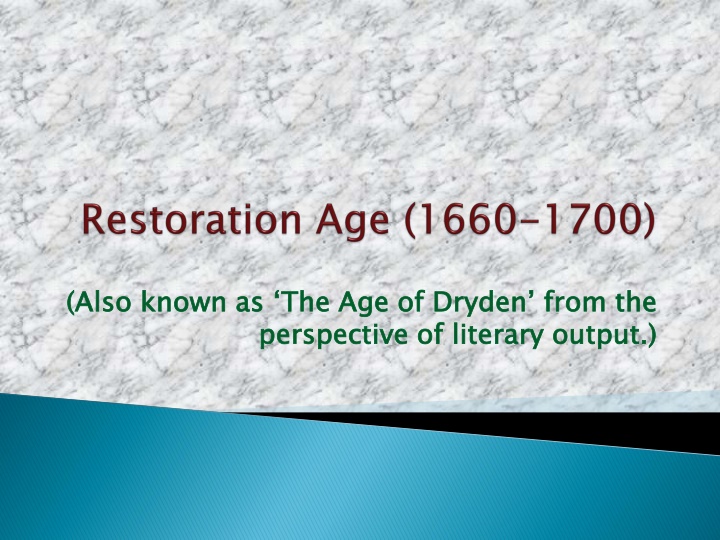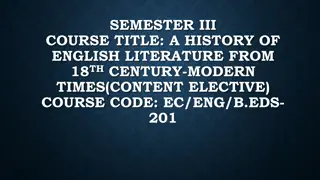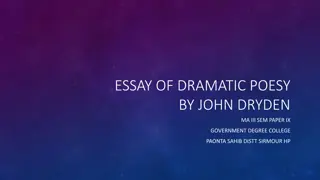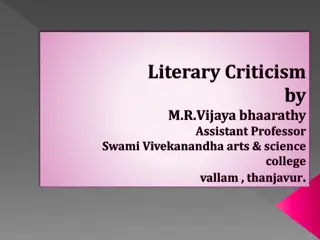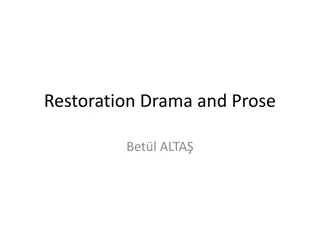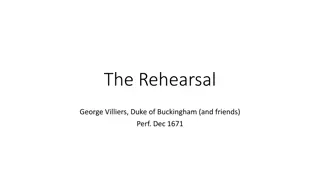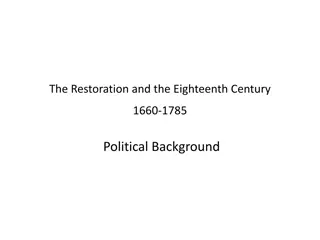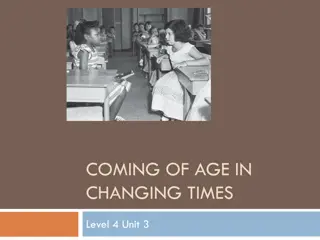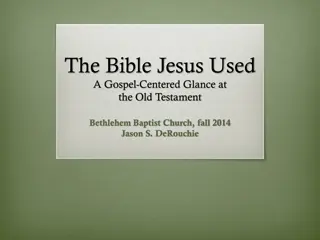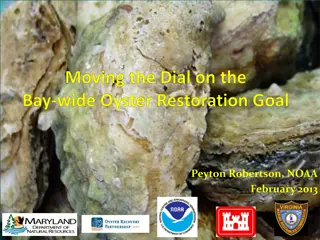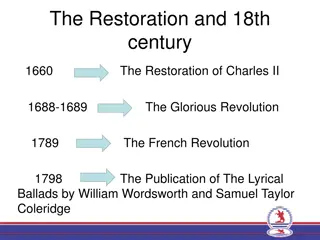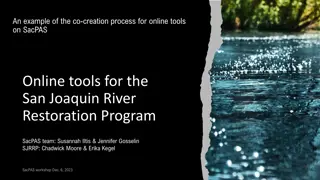The Age of Dryden: Literary Output in Restoration England
The literary period known as the Age of Dryden during the Restoration era in England marked a shift in cultural, artistic, and literary landscape. Set against the backdrop of historical events such as the English Civil War and the Restoration of Charles II, this era saw the emergence of new themes, styles, and influences in literature. The return of Charles II to the throne in 1660 brought about significant changes in society, allowing for a flourishing of artistic expression and creativity.
Download Presentation

Please find below an Image/Link to download the presentation.
The content on the website is provided AS IS for your information and personal use only. It may not be sold, licensed, or shared on other websites without obtaining consent from the author.If you encounter any issues during the download, it is possible that the publisher has removed the file from their server.
You are allowed to download the files provided on this website for personal or commercial use, subject to the condition that they are used lawfully. All files are the property of their respective owners.
The content on the website is provided AS IS for your information and personal use only. It may not be sold, licensed, or shared on other websites without obtaining consent from the author.
E N D
Presentation Transcript
(Also known as The Age of Dryden from the perspective of literary output.) (Also known as The Age of Dryden from the perspective of literary output.)
SOCIAL BACKGROUND The Restoration Period was preceded by Commonwealth period when the country was being ruled by Parliament under the direction of the Puritan General Oliver Cromwell (1653-1658). During this time, the importance of human reason and rationality was emphasised and thus this time was also known as the Age of Enlightenment.
SOCIAL BACKGROUND The English Civil War (1642-1651), a series of civil wars had broken out in between the Parliamentarians and the Cavaliers over the mode and manner of England s governance and issues of religious freedom. As a result of these wars, Charles I underwent trial and execution in 1649; his son Charles II was exiled (1651) and the English monarchy was replaced with the Commonwealth of England under Oliver Cromwell s rule and briefly under his son Richard (1658-59). After the death of Cromwell, his son proved to be an ineffectual leader and the public resented the Puritanism induced into their lives through the military rule.
THE RESTORATION In the year 1660, Charles II returned to England and was restored to the throne. The church supported this restoration in exchange for a promise of amnesty and religious toleration of the former enemies. This is the main event that brought along with itself some important changes in terms of Art, Literature and Culture.
SOME IMPORTANT DATES SO FAR TO REMEMBER... 1642 The theatres were closed down in London, just after the First Civil War under the pretext that the public stage plays were incompatible with the current times, since the plays represented lascivious mirth and levity . 1660 Restoration of Charles II to the throne and reopening of theatres in the same year.
Some changes: Charles II was restored to the throne in May, 1660, there was a spontaneous outburst of joy that found its reflection in the literary outputs of the time as well. King Charles had brought along with him, from his continental exile a love for French wit, gallantry and artistic deftness. The necessary social, economic and religious readjustments crowded in upon the minds of men: their common sense, at times cynical evaluation of life was at wide variance from Roman stateliness and French refinement.
Some Changes: Gravity, moral earnestness and decorum in things that distinguished the Puritan period was specifically ignored. The king was surrounded by a number of corrupt ministers. An atmosphere of gaiety and cheerfulness, licentiousness and moral laxity was restored. Though the Great Fire of 1665 and the subsequent Plague had worked as some punishment, yet the king and his ministers kept up their revels.
LITERARY FEATURES OF THE AGE: Rules of manners, etiquette and social conventions were prioritised, in place of the depth and seriousness of a literary work. The absence of exceptional literary talents or imaginative heights prompted the then contemporary authors to look up the works of ancients, the classics. Thus gradually there started, only a somewhat blind imitation of the classics leading to the beginning of the Neo-classicism . Having spent their exile in France King Charles and his companions inspired a French taste for literature and that got reflected through the coarseness and indecency of the Restoration Comedy of Manners. The French masters who were imitated were: Corneille, Racine, Moliere and the likes.
Oliver Cromwell Charles II
COMEDY OF MANNERS The Restoration Comedy of manners expressed a violent reaction against the prevailing Puritanism through the immorality in the plots. Fashionable intrigues, marriage, adultery were treated with cynicism, worldly wit and a sense of comedy. The characters owed much to the courtiers and the aristocratic people of the society and reflected the temper of the upper classes.
FEATURES The values cultivated in King Charles court found reflections in the plays written during that time. The seriousness concerning the institutions of marriage and relationships was ignored. The plays often had short crisp witty dialogues known as repartee There were certain stock characters that found their places in the Comedy of Manners plays, such as the hero or a rogue, and that of a fop who would be the butt of ridicule in such plays.
THE MAIN PLAYWRIGHTS Sir George Etherage (c.1634-91)- The Comical Revenge: or Love in a Tub, She wou d if she cou d(1688), The Man of Mode: or Sir Fopling Flutter (1676). Sir William Wycherley (1641 1715)- Love in a Wood, or, St. James Park (1671), The Gentleman Dancing Master (1672), The Country Wife (1675) and The Plain Dealer (1676) Sir Thomas Shadwell (c. 1642-1692) The Sullen Lovers (1668), Epsom Wells (1672) Sir John Vanbruh
